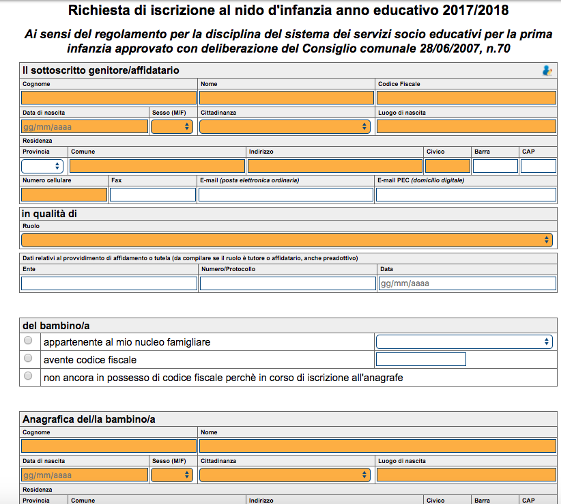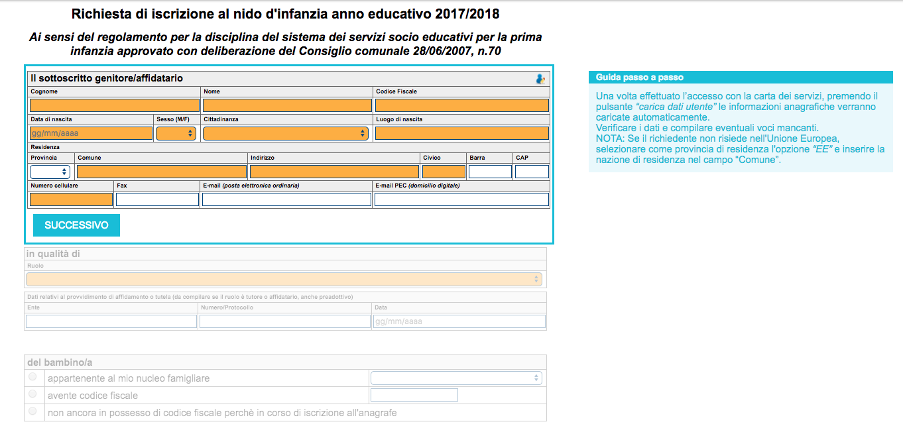Workflow Adaptation Engine
Usually, the design of the e-service is a replica of the paper forms which have been implemented considering the possibility to have a civil servant helping and following the citizens or professionals in the form filling (Figure 1). In many cases the structure of the e-service forms is very complex mainly because forms are composed by many atomic information units (e.g. user registry, services specific information and data, declaration, …). This situation puts the citizen in the unfortunate position of having to manage the complex interaction without the help of the Civil Servant.

Sample of a digital module
The Workflow Adaptation Engine (WAE) is the component responsible to introduce interface adaptation techniques for aligning the interaction complexity and the specific user competences and capabilities.
In proposed approach, the e-service is modelled as an interaction flow, where a sequence of information blocks is presented to the user instead of a potentially large complex form. Each block is annotated with relevant descriptions and links to the Citizenpedia questions and answers according to the new SIMPATICO e-service interaction model.
The Workflow Adaptation Engine is in charge to help the user in the completion of the form personalizing the interaction based on the user capabilities and previous experiences.

A digital module powered with Workflow Adaptation
The interaction personalization is represented in two ways: associating different modes of interactions to the different types of profiles and providing personalized annotations/descriptions of different information elements with respect to the different profiles.
Current version of the workflow adaptation allows for associating and linking the e-service blocks with additional descriptions and materials. These annotations may be personalized in order to give different information for different user profiles.
The platform aims at addressing the following interaction modalities:
Original module
This corresponds to the original non-simplified UI of the e-service. Normally applicable to expert users that frequently use of this or similar e-services.
Simplified module
This corresponds to the UI provide by the current version of the workflow simplification, where the user is guided through a series of steps corresponding to the individual logical information blocks appropriately annotated and linked.
Question-answer UI
This modality replaces the original form-based interactions with a series of questions for specific information entities and filling the remaining data automatically. This modality may be used by the least experienced users that face serious problems with the electronic forms. This modality requires additional configuration that associate to the required information entities clear and simple questions to be posed to the user.
